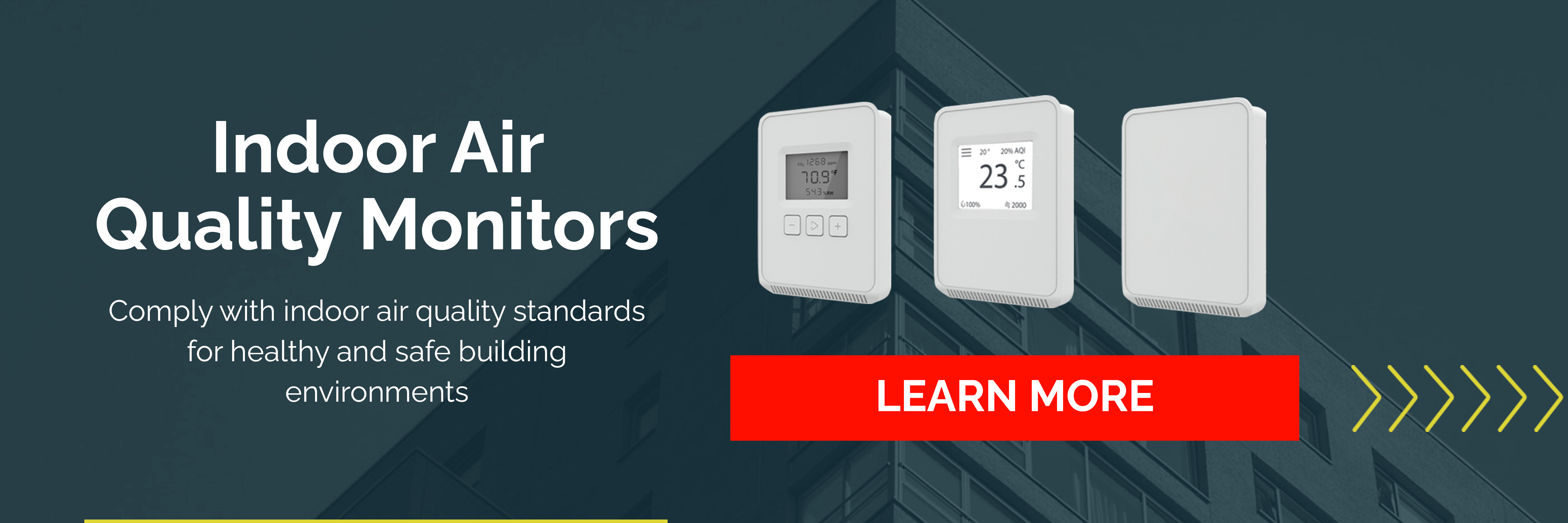How to Improve Air Quality Compliance with Veris IAQ Sensors

When it comes to managing a building, you will be hard-pressed to find anything more important than the air quality inside of it. If the air quality is low, then the best case is a decline in productivity and concentration, and the worst case could involve significant health risks. To ensure your building is a healthy and productive environment, you need to invest in some air quality sensors.
It’s not enough to install a single air quality sensor, though. Even several of the same air quality sensors won’t be enough to ensure compliance with airflow measurement regulations and the various HVAC codes and standards out there. To help maintain compliance and maximize the efficiency of your building’s internal systems, you need a sensor platform composed of multiple types of indoor quality products and sensors.
The Importance of Testing Air Quality
According to the EPA, airflow measurement and monitoring are crucial for several reasons. With the right air quality sensors, you can:
- Assess the extent of air pollution in your building
- Provide air quality data in a timely manner
- Better implement and support your air quality goals
- Track trends in air quality
- And more
Testing air quality is essential not only for the well-being of your building’s occupants but also to assess the effectiveness of your building’s HVAC systems. If your air conditioning units aren’t functioning correctly, for example, then air quality sensors will be able to tell you how the units are malfunctioning and what effect that malfunction is having on the quality of air it’s putting out.
The more data you have on your internal airflow, the better able you will be to ensure continued compliance with the standards you’re beholden to. And the more compliant your building’s systems are, the better the air quality will be, ultimately saving you time and money.
The Air Quality Sensors You Can’t Go Without
To help navigate the balance between energy efficiency and compliance with ASHRAE standards for environmental control and indoor air quality, we’ve outlined three of the most important (but certainly not the only important) air quality sensors you should invest in.
- CO2 Sensors: Too much CO2 in the air can cause headaches, excessive drowsiness, and a general lack of concentration in your occupants. When you install the CO2 sensors that Veris offers, you’ll rest easy knowing that CO2 levels are being monitored continuously and managed automatically.
- Temperature Sensors: Monitoring the temperature of an environment can be tricky. People can quickly tell when a room is too hot or too cold, so you need to have a system that can carefully monitor temperature and respond to fluctuations accordingly. That’s what Veris’ temperature sensors are designed for. With high accuracy and reliability, and multiple form factors, you can easily maintain a comfortable (and cost-effective) temperature.
- Humidity Sensors: The HW2 humidity sensors from Veris come with fully interchangeable elements that have 1%-2% accuracy without any additional calibration required. They are available in LCD or non-display and are also equipped with a thin-film capacitive sensor that can be easily replaced in the field. These sensors allow you to get a clear look into how humid an environment is and then quickly program your building’s HVAC systems to address it.
When you have indoor air quality products like these plugged into your building’s sensor platform, you’ll make ASHRAE and HVAC compliance easier than it’s ever been and provide a level of occupant comfort that would’ve cost you considerably more.
If you have any questions about the air quality sensors we mentioned above or want to learn more about how they can help you trim your energy bill down, get in touch with one of our experts today!





